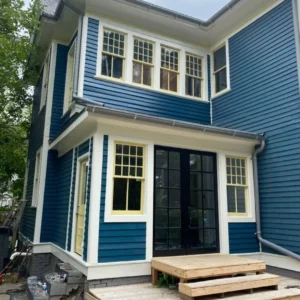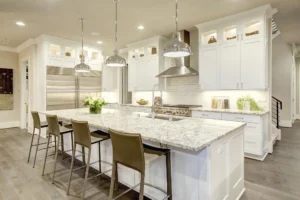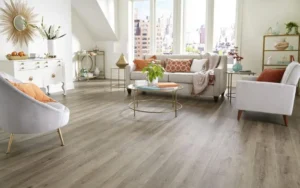Drywall, also known as gypsum board or plasterboard, is a popular material used for interior walls and ceilings in residential and commercial buildings. It provides a smooth and durable surface that can be easily painted or textured. However, like any construction material, drywall is not immune to problems and issues that may arise over time. In this article, we will explore some of the common drywall problems and provide solutions on how to fix them effectively.
Drywall Cracks
One of the most common drywall problems is the development of cracks. Cracks can occur due to settling of the building, temperature fluctuations, or improper installation. Small cracks are relatively easy to fix, but larger cracks may require more extensive repairs.
Solution for Dry Wall Cracks
For small cracks, use a putty knife to apply a thin layer of joint compound over the crack, and then smooth it out. For larger cracks, use a self-adhesive mesh drywall tape to bridge the gap, and then apply joint compound over the tape. Feather the edges of the compound to blend it with the surrounding surface. Allow it to dry, sand it down, and apply a second coat if necessary. Finish by sanding and painting the repaired area to match the rest of the wall.
Nail Pops
Nail pops are raised bumps that appear on the surface of the drywall, caused by the movement of the wood framing beneath the drywall. As the framing shrinks or expands, it can push the nails or screws through the drywall, creating a bump.
Nail Pops Solution
To fix nail pops, first, use a hammer or screwdriver to drive the nail or screw back into the wood framing. Then, apply joint compound over the area, feathering the edges to blend with the surrounding surface. Allow it to dry, sand it down, and apply a second coat if necessary. Finish by sanding and painting the repaired area.
Water Damage
Water damage is a common problem in areas where moisture is present, such as bathrooms, kitchens, or basements. Water can cause the drywall to swell, warp, and become discolored. It can also lead to mold and mildew growth if not addressed promptly.
Water Damage Solution
Before repairing water-damaged drywall, it is essential to identify and fix the source of the water leak. Once the source is resolved, cut out the damaged area of the drywall and allow it to dry completely. Replace the damaged section with a new piece of drywall and secure it with screws or nails. Tape and mud the seams, and then apply joint compound over the repaired area. Sand and paint the surface to match the surrounding wall.
Texture Problems
Drywall texture is often applied to walls and ceilings to add visual interest and cover imperfections. However, sometimes texture application can go wrong, resulting in uneven or poorly applied texture.
Texture Problems Solution
To fix texture problems, first, scrape off the uneven or poorly applied texture with a putty knife or a drywall scraper. If necessary, sand the surface to create a smooth and even finish. Once the surface is prepared, reapply the desired texture using a texture sprayer or texture roller. Allow the texture to dry, and then paint the surface to finish the repair.
Dents and Holes
Dents and holes in drywall can occur due to accidental impacts or the removal of fixtures or hardware. These imperfections can be unsightly and detract from the appearance of the wall.
Dents & Holes Solution
For small dents, use a putty knife to apply joint compound over the area, feathering the edges to blend with the surrounding surface. Allow it to dry, sand it down, and apply a second coat if necessary. Finish by sanding and painting the repaired area.
For larger holes, use a drywall saw or utility knife to create a clean, rectangular opening around the hole. Cut a piece of drywall slightly larger than the hole and fit it into the opening. Secure the patch with drywall screws or nails, and then tape and mud the seams. Apply joint compound over the repaired area, feathering the edges to blend with the surrounding surface. Allow it to dry, sand it down, and apply a second coat if necessary. Finish by sanding and painting the repaired area.
Peeling or Bubbling Paint
Peeling or bubbling paint on drywall can occur due to moisture issues, improper surface preparation, or low-quality paint.
Peeling or Bubbling Paint Solution
To fix peeling or bubbling paint, first, scrape off the loose paint with a putty knife. Sand the surface to create a smooth and even finish. Apply a primer over the repaired area to promote paint adhesion, and then repaint the surface with high-quality paint.
























